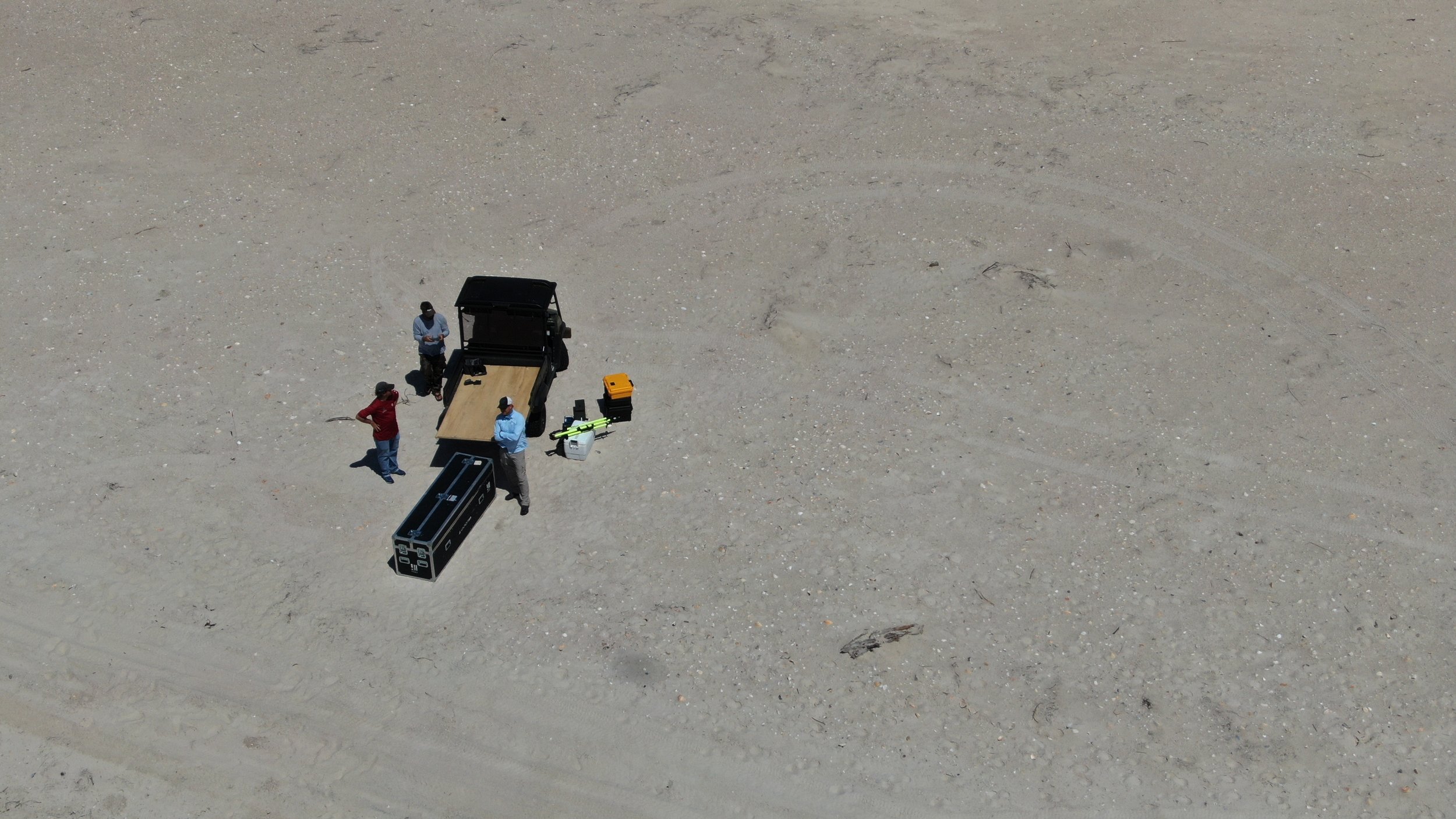Since 2016, members of MANTIS Lab and CBI field crew have collaborated with the Apalachicola National Estuarine Research Reserve’s (ANERR) Megan Lamb for week-long field campaigns supported by National Oceanic and Atmospheric Administration’s (NOAA) subsidiary, the National Geodetic Survey (NGS). Each year, the crew gathers Terrestrial Laser Scanner (TLS) and Unmanned Aerial Systems (UAS) data for one site on the main barrier island, Saint George Island, and from several sites on “Little” Saint George Island (it is the western component of the island that was split away from Saint George Island by Bob Sike’s Government Cut in 1954). The Saint George Island site is NOAA’s Unit 4 SET site while the “Little” Saint George sites include several beach profiles (D341, R4, R41, and R29) and several historical photosites (Westpass, Bayside, and Sike’s Government Cut). This data collection is part of an NGS gulf-wide research initiative to develop and improve current Relative Sea Level Rise (RSLR) models for the gulf coast by gathering high-resolution spatial (elevation) data.
Map of the eight sites surveyed annually by MANTIS, CBI, and ANERR.
A gator sunning herself on “Little” Saint George Island.
The TLS crew setting up a base at Saint George Island.
Vapor 55 crew surveying one of the beach profiles on “Little” Saint George Island.
Aerial View of the bay side of “Little” Saint George Island.
This year’s trip began May 20th and ended May 27th and included MANTIS’ director, Michael Starek, CBI’s Research Engineering Associates, Alistair Lord and Zachary Hasdorff, MANTIS Lab Manager, Melanie Gingras, and MANTIS master’s students, Jake Berryhill and Kevin Wilson. During the week, the crew used new platforms including the Wingtra WingtraOne and Pulse Aerospace Vapor 55 as well as tried-and-true platforms from previous Apalachicola field campaigns including the DJI Mavic, DJI Pantom 4, and Riegl VZ400 Terrestrial Laser Scanner (TLS). When georeferenced using RTK GPS control points. This data will generate point clouds that provide high spatial resolution data to monitor elevation changes as small as a couple centimeters and othomosaic imagery with pixel sizes on the order of 2cm GSD or less.
The Apalachicola field crew after their last day of field work on “Little” Saint George Island: Megan Lamb (top bow), Melanie Gingras (bottom bow), Jake Berryhill (top middle), Zachary Hasdorff (bottom middle), Alistair Lord (top stern), Kevin Wilson (middle stern), and Michael Starek (bottom stern)
To see video footage from our YouTube channel:






